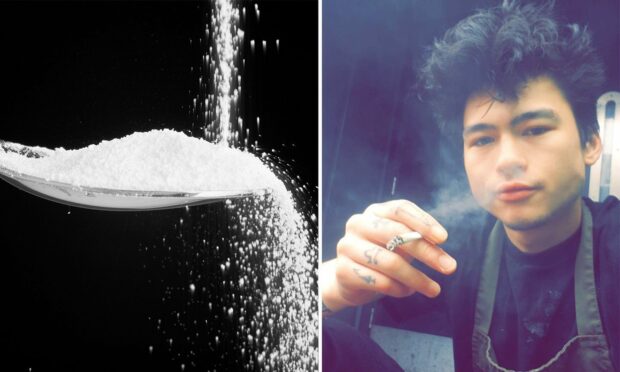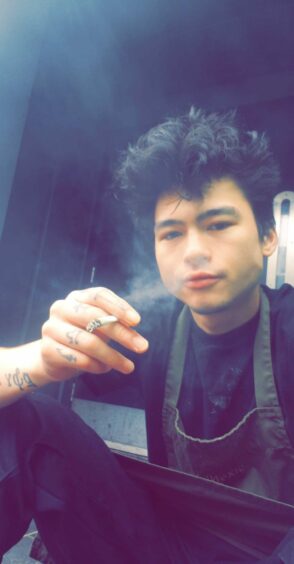When Lewis started work as a chef at the age of 17, a new life beckoned.
Bullied at school over his biracial background, the Ellon teenager found a more welcoming community among his hard-working colleagues in the kitchen, many of whom also saw themselves as social misfits.
But it was as a chef in Ellon that Lewis started drinking heavily. When he moved to a new job in Aberdeen, the drinking got worse.
“I was working in much bigger kitchens,” says Lewis, who asked for his surname to be withheld. “That’s when I really started drinking, because I was moving to the city. Everything was on my doorstep, along with all the bad decisions, drinking and everything else that came with it.”
Cocaine a much-needed energy boost in the kitchen
By his own admission, Lewis fell in with a bad crowd.
Drugs entered the picture. Cocaine was the drug of choice among the kitchen staff, and it wasn’t uncommon for people to be using while working.
Lewis says he’s not proud of it but he did too. The high-pressure environment of a professional kitchen sometimes demanded a release, or an energy boost.
And anyway, no matter how crazy things got, it was better than being back at school.
“It was nice to actually have something where I wasn’t constantly getting racist abuse hurled at me,” Lewis says.
The breaking point came a few months ago after a failed relationship pushed Lewis even further into drinking.
The more he drank, the more his health deteriorated. In and out of hospital, Lewis, who was 23 at the time, realised he couldn’t carry on like this.
“It was just a wake-up point, that this isn’t me,” he says. “This is not me reaching my full potential.”
‘All it takes is one incident’
Now 24, Lewis is three-months sober, and a “much-better person”. He’s determined to make the sobriety stick, but knows a long road lies ahead.
“I don’t want to go back to the way I was,” he says. “But addiction is a real thing. All it takes is one incident, one small incident, and then you go back to square one. And that’s what I don’t want to happen.”
Many of the temptations that led to him becoming an addict are wrapped up in his job. Lewis isn’t working at the moment, but the challenge when he is is to navigate his old world while holding on to a hard-won sobriety.
“[The industry] it’s been very good for me,” Lewis says. “And it’s also been very bad.”
The problem, he continues, is that “the industry completely destroys chefs”.
“It’s underpaid and underappreciated. It’s mentally straining on every physical aspect of the body.”
‘Everyone else in the kitchen is doing it’
Little wonder, then, that staff turn to drink and drugs to cope with the pressure.
Add to the mix the type of people that gravitate to hospitality and you have a potent cocktail.
Lewis says he’s worked with all kinds of people in kitchens, from sex offenders to social pariahs. The community generates a culture where drinking and drug-taking becomes normal.
“Everyone else in the kitchen is doing it, so you get stuck into it,” he says.
Meanwhile, support in the industry is almost non-existent, according to Lewis. Not that it matters much – the chef says that even if someone had offered him help, he wouldn’t have taken it.
The drink and drugs had too much of a hold.
“They are a crutch,” Lewis explains. “It doesn’t matter how bad your day at work has been, or if your family or your friends are bad. You’ll always have a drink, you always have a line; it doesn’t matter.”
‘It comes down to the choice I make’
Lewis is considering leaving the industry. He’s always loved music, and used to make his own. That was before he realised that cheffing was a “more realistic” way to earn a living.
But if he does jump back into the pressure cooker, he feels strong enough to withstand his old habits.
It is, he admits, all down to him.
“I used to have the habit of every night without fail going into a pub, or having a drink at work,” he says. “With that came a lot of issues, and it would affect my work life, it would affect my personal life. So it comes down to the choice I make. Whether it’s the right one or not, it’s still a choice, and I’ve got to deal with the end result.”


